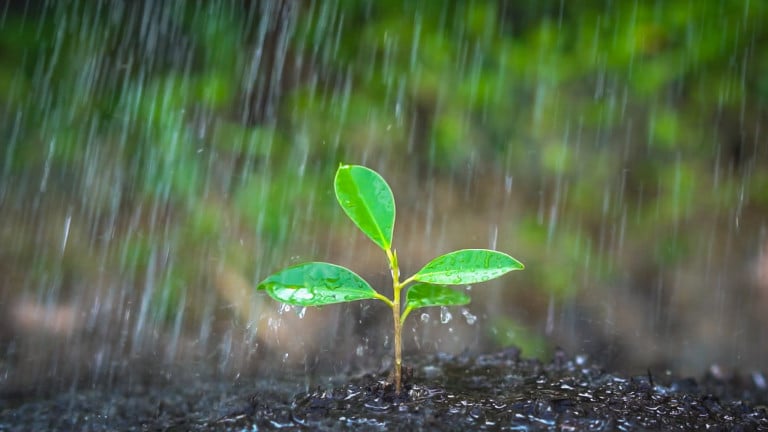Table of Content:
- Formation of rainfall
- Types of rainfall
- Significance of rainfall
- Impact of climate change on rainfall patterns
Rainfall, a fundamental component of Earth's hydrological cycle, is a captivating natural phenomenon that sustains life, shapes ecosystems, and influences the climate. From gentle drizzles to torrential downpours, rainfall encompasses a myriad of forms and plays a vital role in shaping our environment. In this article, we will explore the various aspects of rainfall, including its formation, types, significance, and the impact of climate change on precipitation patterns.

Formation of Rainfall:
Rainfall originates from the complex interplay of atmospheric conditions and the water cycle. The process begins when water vapor, generated primarily through evaporation from oceans, lakes, and rivers, rises into the atmosphere. As the moist air ascends, it cools, causing condensation to occur. Condensed water vapor forms clouds, composed of tiny water droplets or ice crystals. Within these clouds, water particles merge and grow larger through a process known as coalescence or aggregation.
Eventually, the water droplets or ice crystals become too heavy to remain suspended in the atmosphere, leading to precipitation. Precipitation can take various forms, such as rain, snow, sleet, or hail, depending on the temperature conditions in the atmosphere. Rainfall occurs when the temperature is above freezing, allowing the water droplets to remain in liquid form as they descend to the Earth's surface.
Types of Rainfall:
Rainfall can be categorized into several types based on its characteristics and the mechanisms that trigger it. The most common forms of rainfall include:
Convectional Rainfall:
This type occurs when the Earth's surface heats up, causing warm air to rise rapidly. As the air ascends, it cools and condenses, resulting in localized thunderstorms and intense rainfall.
Orographic Rainfall:
Orographic rainfall occurs when moist air is forced to rise over mountains or elevated terrain. As the air encounters higher altitudes, it cools, leading to cloud formation and precipitation on the windward side of the mountain.
Frontal Rainfall:
Frontal rainfall is associated with the meeting of two contrasting air masses, typically a warm front and a cold front. The warm air rises over the cold air, producing steady rainfall along the frontal boundary.
Cyclonic Rainfall:
Cyclonic or tropical rainfall is linked to low-pressure systems, such as hurricanes or tropical storms. These weather systems draw in moist air, causing widespread and heavy precipitation.
Significance of Rainfall:
Rainfall is of paramount importance to life on Earth. It serves as a primary source of freshwater, replenishing rivers, lakes, and underground aquifers. Adequate rainfall is crucial for agriculture, providing irrigation for crops and supporting food production. It also sustains natural ecosystems, ensuring the survival of plants, animals, and microorganisms.
Furthermore, rainfall plays a significant role in regulating the Earth's climate. Rainfall helps distribute heat across the planet, as areas near the equator receive more intense solar radiation and subsequently experience higher precipitation rates. This heat distribution influences global wind patterns and ocean currents, shaping weather systems and climate zones.
However, both excessive and inadequate rainfall can lead to environmental challenges. Heavy rainfall can cause flooding, damaging infrastructure, disrupting transportation, and posing risks to human lives. Conversely, prolonged droughts resulting from insufficient rainfall can trigger water scarcity, crop failures, and ecological imbalances.

Impact of Climate Change on Rainfall Patterns:
Climate change has the potential to significantly alter rainfall patterns worldwide. As the Earth's climate system undergoes alterations due to increased greenhouse gas emissions, changes in precipitation distribution are observed in many regions.
One of the anticipated effects of climate change is the intensification of the water cycle, leading to more extreme rainfall events. Warmer temperatures increase the evaporation rates, resulting in higher moisture content in the atmosphere. This elevated moisture, when combined with atmospheric instability, can contribute to intense downpours and an increased risk of flash floods.
Conversely, climate change can also lead to shifts in rainfall patterns, causing certain regions to experience decreased precipitation. This can result in extended droughts, posing challenges for agriculture, water resources, and ecosystems. Climate models suggest that some areas, particularly those already prone to aridity, may face an increased risk of desertification and water scarcity.
Rainfall, an intricate natural process, holds immense significance for our planet's ecosystems, human societies, and climate. Its formation, types, and patterns provide a glimpse into the complexity of Earth's water cycle. While rainfall sustains life and supports agricultural activities, climate change poses significant challenges by altering precipitation patterns, leading to both excesses and deficiencies. Understanding rainfall and its changing dynamics is crucial for developing strategies to adapt to the evolving climate and mitigate its impacts on our environment. By valuing and conserving this precious resource, we can work towards a sustainable future where rainfall continues to nurture our planet and its inhabitants.


You must be logged in to post a comment.